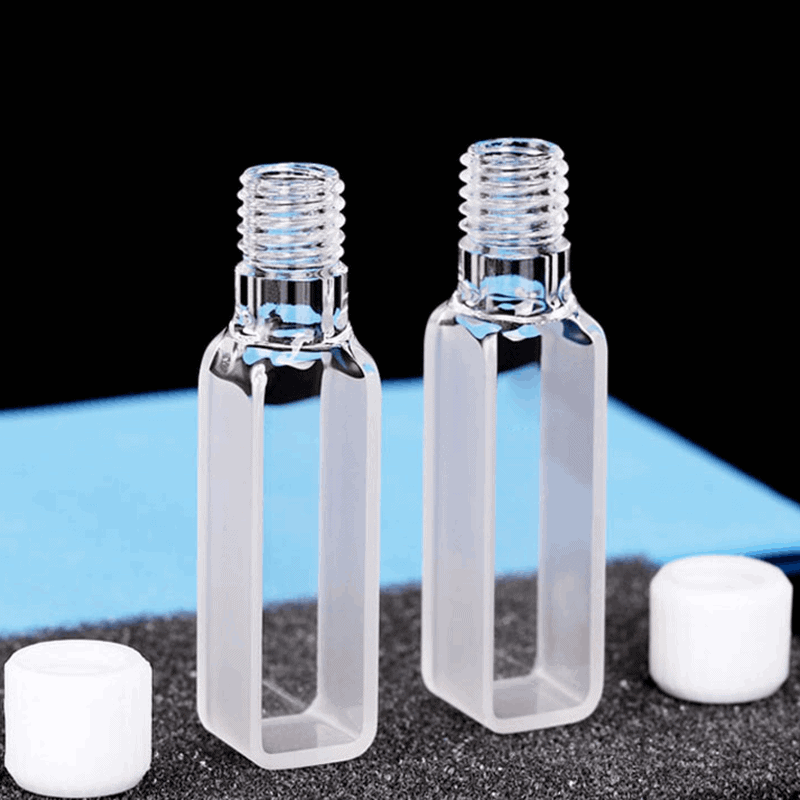How to Maximize Detail with the Correct Cuvette Size
How to Maximize Detail with the Correct Cuvette Size
Blog Article

The Benefits of Cuvettes and Quartz Vials in Scientific Study
In scientific study, the reliability and stability of dimensions are paramount, especially in areas like spectroscopy, substance evaluation, and biology. One important ingredient that assures accuracy in these studies could be the cuvette, specially quartz vial. Understanding the advantages of cuvettes and the benefits of applying quartz vials can considerably affect the outcome of experiments and lab work.
Detail in Spectroscopy
Cuvettes are important for keeping water samples in several diagnostic instruments, especially spectrophotometers. These devices measure the absorbance or sign of gentle through an example, and the cuvette provides as the pot for the test all through analysis. The measurement and product of the cuvette enjoy an essential position in ensuring the reliability of the measurements. Quartz vials, exclusively, provide extraordinary visual clarity, enabling accurate mild sign across a wide variety of wavelengths, including uv (UV) light. That makes quartz vials a great choice for spectroscopic tests, wherever accuracy is critical.
Longevity and Substance Opposition
Quartz vials stick out because of their toughness and resistance to tough chemicals. Unlike plastic cuvettes, quartz vials are less likely to degrade or react with chemicals in the trial, ensuring that the results of the test remain unaffected by possible contamination. This characteristic makes quartz vials especially of good use in environments where aggressive solvents or high temperatures are involved. Their ability to endure excessive situations without limiting the strength of the sample is one of many main factors they're favored in lots of lab applications.
Precision in Size and Shape
How big a cuvette is not just a one-size-fits-all situation. The aspect of the cuvette, such as for instance their journey size, influences the volume of the trial and the total amount of gentle that moves through. Picking the proper cuvette measurement for the precise try ensures that the results are not skewed due to under or over-concentration of the sample. Quartz vials come in a variety of shapes and patterns, letting researchers to select the most suitable option on the basis of the needs of these experiment. This mobility plays a role in more correct data and provides for greater get a grip on over fresh conditions.
Transparency and Mild Indication
Quartz is noted for its outstanding openness, specially in the ultraviolet (UV) and visible gentle spectra. This makes quartz vials well suited for use within devices that require clear visual paths, such as for example UV-Vis spectrophotometers. The superior mild sign properties of quartz ensure that the light goes through the sample with minimal spreading or consumption, leading to more precise readings. For studies that demand high detail, quartz vials offer a definite advantage over other materials.
Long-Term Reliability
When employed in research laboratories, it is crucial to own reliable tools that maintain their strength over time. Quartz vials aren't only chemically resilient but also highly sturdy, meaning they're less likely to knowledge wear and tear. This long-term reliability ensures that scientists may use quartz vials for expanded times without worrying all about deterioration or the need for repeated substitutes, contributing to cost-effectiveness in the extended run.
To conclude, both cuvettes and quartz vials present a range of benefits that improve the standard and accuracy of laboratory experiments. From their remarkable optical understanding to their substance resistance and durability, these methods are crucial in medical research. By choosing the proper cuvette size and applying quartz vials, scientists can ensure precise dimensions and obtain more reliable results inside their studies. Report this page